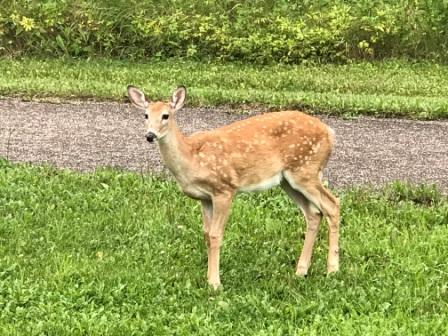By Lori Janeson
Have you ever heard of Hecla Island?
If not, don’t feel too bad. Few Manitoba outsiders know of the place. Even some locals aren’t quite sure where to find it on the map.
That’s a shame. Hecla Island is a hidden gem — a true recreational resource for all. And it’s been that way for far longer than most realize.
Let’s take a walk back in time, through Hecla Island’s storied history of human habitation. We’ll start as far back as we know, with the Anishinabe people.
Hecla Island Before 1870
The Winnipeg Formation bedrock underpinning Hecla Island is more than 400 million years old. Formed at the bottom of a shallow sea, when the area that would become southern Manitoba was baking close to the equator, the porous shale and sandstone supports newer layers of limestone and till.
Things didn’t get interesting on Hecla until much more recently. Back in the day, Anishinabe bands used the island as a sort of spiritual nexus. It’s not clear that the island was inhabited continuously or even on a semi-permanent basis, but there’s irrefutable evidence of ceremonial use. Today, it’s possible to see the faint remnants of these sacred sites on various parts of Hecla Island.
The First Europeans: The Early Years of New Iceland
The first Europeans arrived on Hecla Island in the mid-1870s. They were Icelandic by descent, and they were scared: A massive volcanic eruption had forced them from their homeland, into a perilous ocean journey to an uncertain future in a new land. Their original habitation, in Ontario, was far from ideal, so many elected to travel deeper into the Canadian interior for a chance at a truly autonomous life. Fittingly, they called their new home “New Iceland.”
As it turns out, life on Hecla Island wasn’t much easier. Though the Canadian government gave the Icelanders a carve-out from what was then the Northwest Territories — Manitoba was far smaller at the time — they faced famine and disease during their first years in New Iceland. Many died; others moved on. Due to poor recordkeeping, the true toll will likely never be known.
Hecla Island’s Heyday
As time went on, conditions slowly improved. Four distinct settlements sprang up in New Iceland, including Hecla Village — still very much visible today. The Icelanders learned to adapt to the region’s harsh winters and poor soil, relying primarily on the lake’s bounty to sustain them.
This was a fishing community through and through — one of inland Canada’s most successful outside the Great Lakes watershed. For decades, New Iceland sustained itself by feeding hungry Canadians. Life on the lake wasn’t glamorous, but it worked.
Hecla’s Decline and Conversion
The good times didn’t last, unfortunately. Like most stories of economic calamity, Hecla Island’s decline is attributable to a number of different causes, and there remains some debate among historians about the precise progression of things.
What’s beyond dispute: By the seventh decade of the 20th century, Hecla Island’s economy was in serious trouble, its very way of life under assault by faceless forces beyond the control of its inhabitants.
“But by the time the late 1960’s rolled around too many people were leaving the island, in large part because of a decline in the fisheries industry,” writes Leigh McAdam on her popular travel blog, Hike Bike Travel. “To save the community and to provide employment, the islanders banded together and petitioned the Manitoba government to make Hecla Island a park.”
Originally known as Hecla Provincial Park, the preserve opened to the public in 1975 — a remarkable turnaround given the island’s prior history. It quickly gained popularity with Manitobans eager for a truly expansive wilderness preserve on the shores of Lake Winnipeg.
In the late 1990s, Hecla Provincial Park expanded dramatically when the provincial government added a mainland unit, which covered the peninsula known locally as Grindstone.
The combined park, Hecla Grindstone Provincial Park, now covers more than 1,000 square kilometers. It’s worth noting that the other provincial parks on or near Lake Winnipeg at the time were quite small; even today, Hecla Grindstone Provincial Park is the largest contiguous preserve on the southern, more accessible portion of the lake.
Hecla Island Today
Today, Hecla Island’s economy relies primarily on tourism. Its top attractions all have some connection to the past, though.
“Hecla Village boasts a well-preserved remnant of early-20th century Icelandic-Canadian life, while the hiking trails that dot the park’s natural areas pass disused quarries, old fishing huts, rotting docks, and ceremonial sites used for hundreds of years by the Anishinabe people.”—Lori Janeson
Visitors to Hecla have a variety of lodging options, from the basic to the luxurious. The most popular are:
Continue reading →

 You’ll wind up in the village, but be sure to take your time and have your camera handy for unexpected sights (bald eagles, big game) along the way.
You’ll wind up in the village, but be sure to take your time and have your camera handy for unexpected sights (bald eagles, big game) along the way.